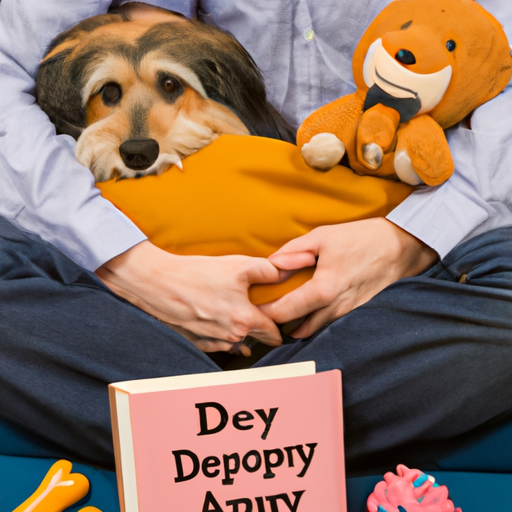Separation anxiety in dogs can be a challenging issue to tackle. As a caregiver, you may feel overwhelmed and unsure of how to assist your furry friend. This guide will provide you with a comprehensive approach to handling this common canine problem.
1. Understanding Separation Anxiety in Dogs
Separation anxiety in dogs is a stress response that can manifest in various ways when your dog is left alone. It’s essential to understand that this reaction is not a display of disobedience or spite but a sign of emotional distress.
Symptoms include but are not limited to:
- Excessive barking or howling
- Destructive behavior
- Pacing
- Attempts to escape
- Accidents in the house
2. Identifying the Triggers
The first step in dealing with separation anxiety is identifying the triggers. These are the events that precede your departure, which your dog associates with being left alone. Common triggers can include:
- Grabbing your keys
- Putting on a specific coat or shoes
- The sound of a car door
Monitor your dog’s behavior closely to identify these triggers.
3. Desensitization and Counter-Conditioning
Desensitization and counter-conditioning are the most common treatments for separation anxiety.
Desensitization involves gradually getting your dog used to the idea of being alone. Start by leaving for short periods of time and gradually increase the duration.
Counter-conditioning is changing your dog’s negative association with being alone to a positive one. This can be done by providing a special treat or toy that they only get when you’re gone.
| Desensitization | Counter-Conditioning |
|---|---|
| Gradual exposure | Positive reinforcement |
| Start with short periods | Special treat or toy |
4. Training Techniques
Training can also play a significant role in managing separation anxiety. Here are a few techniques:
- Independence Training: Encourage your dog to be independent. This can be achieved by discouraging clingy behavior and promoting self-sufficiency.
- Crate Training: Dogs are den animals and can find comfort in having a confined, safe space. Make sure the crate is a positive place and never used for punishment.
- Obedience Training: Basic commands such as “sit,” “stay,” and “leave it” can help manage anxiety.
5. Medication and Professional Help
In severe cases, medication may be necessary. Always consult with a veterinarian before administering any medication. They might refer you to a veterinary behaviorist for more specialized treatment.
6. The Importance of Exercise and Mental Stimulation
A tired dog is a good dog. Regular exercise and mental stimulation can drastically reduce symptoms of separation anxiety.
- Take your dog on walks or runs
- Play games like fetch or tug-of-war
- Use food puzzles or interactive toys
7. Patience is Key
Remember, treating separation anxiety takes time, patience, and consistency. Progress may be slow, but every step forward is a victory.
8. FAQ
Q: Can separation anxiety in dogs be cured?
A: While it can be managed and improved, it may not be completely cured. Each dog is individual and the success of treatment can vary.
Q: How long does it take to treat separation anxiety?
A: This depends on the severity of the anxiety and the individual dog. It can take several weeks to several months.
Q: Can I leave my dog alone if he has separation anxiety?
A: It’s best not to leave your dog alone for long periods. If you have to, consider doggy daycare or hiring a pet sitter.
Remember, you’re not alone in this journey. With patience, understanding, and a little help from the experts, you can manage your dog’s separation anxiety effectively.



